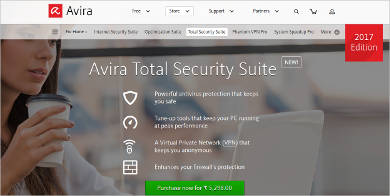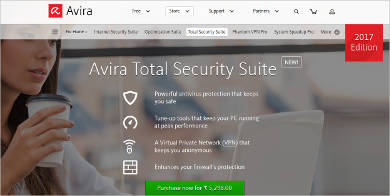Harmful threats for laptops are all over the Internet and even in local transfers. How does someone prevent this from happening? What are the causes? It can literally happen to anyone without a strong firewall because they are exposed to viruses, malware, and worms. Great news though because there are protection programs that keep devices safe from those.
Aside from software threats, there are other problems that can happen to laptops as well. There can be damage on the unit itself or a function done that resulted in the system crashing. These can be monitored using a Computer Tracking Software, which oversees all activities done on a certain device.
AVG
Avast
McAfee Security Scan Plus
360 Total Security
ZoneAlarm
The Different Viruses and How to Avoid Them
- Trojan
Although they are not totally considered as viruses since they do not self-replicate, they still pose a big threat to devices. Trojan horses disguise themselves as significant programs and collect any personal information it can find. This can be passed on even through local file transfers. Some USB Protection Software can help in solving this. - Overwrite Virus
One of the most frustrating viruses, this strain infects files and removes all its contents. It usually comes from e-mails and appears as an ordinary message. The best recovery method for infected files is by deleting it. Although it removes the original content, it still saves the remaining uncorrupted files. - Resident Virus
True to its name, this virus houses on the RAM of a system unit permanently. It randomly corrupts programs and files on a computer. The biggest problem of this kind is that even though the source has been deleted, quarantined, or cleaned, it still stays. - Directory Virus
Another frustrating virus is the directory virus that changes the path of your files. It moves the original contents to another location and tricks you to opening it as a program and in turn forever moves your files away.
Comodo Antivirus for Linux
BullGuard Antivirus for Windows
ESET® MULTI-DEVICE SECURITY for Mac
Avira Total Security Suite
Norton – Most Popular Software
What Other Sources Can Put Laptops at Risk?
Aside from e-mails, downloads, and file transfers, there are other sources that can also put the safety and security of laptops at risk. Here are a few to name some:
- Webcams
There are specific programs that are created to override web cameras of devices. The purpose of this is to remotely open the camera and record what it sees unauthorized. This also compromises the safety of users as well as the unit used. There are Webcam Security Software that is free to use that helps keep the security up. - Opening Cracked Software
Although there are plenty of free to use software, some features are still locked for a certain prize. Hence, some people resort to illegal crack versions without taking into consideration that this is a common way to introduce a virus into the system. Also, the program may clash with the setting of the laptop and causes it to crash. - Open Usage of the Units
While it is okay to share laptops with others, just letting anyone use it also puts the laptop and the owner at risk. Anyone can get access to important files and other people who are using might not be as careful. They can open infected data or programs online that will harm the unit.
Related Posts
10+ Best Trust Accounting Software for Windows, Mac, Android 2022
10+ Best Patient Portal Software for Windows, Mac, Android 2022
13+ Best Virtual Reality (VR) Software for Windows, Mac, Android 2022
12+ Best Bed and Breakfast Software for Windows, Mac, Android 2022
15+ Best Resort Management Software for Windows, Mac, Android 2022
14+ Best Hotel Channel Management Software for Windows, Mac, Android 2022
12+ Best Social Media Monitoring Software for Windows, Mac, Android 2022
10+ Best Transport Management Software for Windows, Mac, Android 2022
10+ Best Other Marketing Software for Windows, Mac, Android 2022
10+ Best Top Sales Enablement Software for Windows, Mac, Android 2022
8+ Best Industry Business Intelligence Software for Windows, Mac, Android 2022
10+ Best Insurance Agency Software for Windows, Mac, Android 2022
10+ Best Leave Management Software for Windows, Mac, Android 2022
10+ Best Mobile Event Apps Software for Windows, Mac, Android 2022
10+ Best Online CRM Software for Windows, Mac, Android 2022










